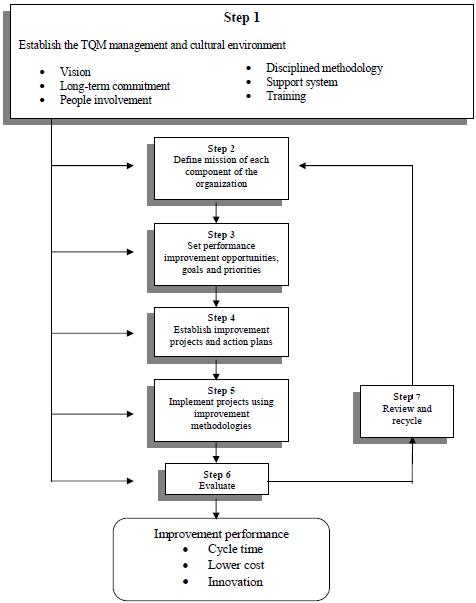The Ohio studies led to two dimensions of leadership behavior-concern for tasks and concern for relations. Almost in the same style, the Michigan University studies made the distinction between job-centered and production-centered leaders. Blake and Mouton rated these concepts in a framework called the Managerial Grid. They interpreted the concepts in a broad way. Blake and Mouton have used “Concern for Production” and “Concern for People’” in their Managerial Grid on horizontal and vertical axes respectively. Managers may be concerned for their people and they also must also have some concern for the work to be done. The question is, how much attention do they pay to one or the other? Managerial Grid Model is a model defined by Blake and Mouton in the early 1960s.It included Impoverished management Authority-compliance Country Club management Middle of the road management Team management Leadership Grid The Managerial Grid was the original name; theContinue reading
Modern Management Practices
Corporate Parenting Strategy
The complexity of transitional business conditions creates a need for creating value through aggregation of different businesses in complex corporate enterprise, which gives it the character of a multi-business firm. Businesses could be defined as being whatever the enterprise chooses to operate as organizationally separate profit-responsible units. Such business entities are often referred to as Strategic Business Units (SBUs) and they are organized as largely separable businesses with control over the main strategic levers that affect their performance. Besides this organizational definition, the businesses could be defined in economic sense relating to Strategic Business Opportunities (SBOs), which are clusters of product-market transactions able to sustain a successful focused business, with financial independence. Processes of merger, acquisition, divestment, and the other processes of transformation continually create new challenges to corporate management towards providing better performance of aggregated businesses than they would achieve if they were independent, stand-alone entities. It is corporateContinue reading
DSMC/ATI Organizational Performance Improvement Model
Out of the organizational performance improvement planning process come specific performance improvement interventions, tactics and techniques. Note that these interventions happen at five checkpoints. Upstream systems, inputs, process, outputs and downstream systems. Quality management efforts must be defined relative to these five checkpoints. In effect, transformation and continuous improvement efforts are commitments to a practice of managing all five-quality checkpoints. The management team then develops, through the performance improvement planning process, a balanced attack to improve total system performance, not just system sub-components. After interventions are made to the system, measure, assess and analyze organizational performance at the five checkpoints to determine whether the expected impact actually occurred. Based on these data, make an evaluation relative to the business strategy, the environment (both internal and external), the vision, the plan and the improvement actions themselves. Note that the process of evaluation is separate from the process of measurement. In addition,Continue reading
Action Research in Organizational Development
Action research is another view of the organizational change process. It is an organizational change process that is based on a research model specifically one that contributes towards the betterment of the sponsoring organization and contributes to the advancement of knowledge of organizations in general. In Action Research, the change agent is usually an outside person, who is involved in the total change process, from diagnosis to evaluation. This person usually contracts with the sponsoring organization to engage in organizational research, whereas the typical change agent is called in to make a specific change. Action Research in organizational development provides a scientific methodology for managing planned change. Kurt Lewin described action research as “a comparative research on the conditions and effects of various forms of social action and research leading to social action” that uses “a spiral of steps, each of which is composed of a circle of planning, action,Continue reading
Involvement and Participation in Organizational Change
Involvement and participation are perhaps the most powerful techniques management can use to gain acceptance of change. Commitment to carry out these decisions is intensified. Personal satisfaction derived from the job is increased. The extent of personal involvement can range from merely being informed, to discussing problems and voicing opinions and feelings to actually making and implementing decision. At the most superficial level, some participation occurs when one is designated to receive information either written via distribution lists or in face-to-face briefings. At a slightly more intensive level, participation can be gained through individual or group consultations. This process is no more than an extension of the face-to-face discussion. In the process of soliciting inputs, the managers carry this approach to step further. Those present are asked to make suggestions about how the change might be accomplished. Alternately a problem might be assigned to a group for analysis and recommendedContinue reading
Minimizing Resistance to Organizational Change
Resistance to change be those affected is often the single most formidable obstacle to its successful realization. It is to be understood at the outset that resistance to change is not, the fundamental problem to be solved. Rather, any resistance is usually a symptom of more basic problems underlying the particular situation. To focus the attention of symptom alone will achieve at best only limited results. The effective solution is that one must look beyond the symptom that is resistance to its more basic causes. It is quite appropriate and practicable for a manager to focus on situational and environmental factors that cause resistance. Many of these are directly within management’s control. Probably, efforts to minimize any resistance should be undertaken while it is still potential rather than real. There are different methods that the managers can use to minimizing resistance to organizational change. Fundamentally, there are only two strategicContinue reading



